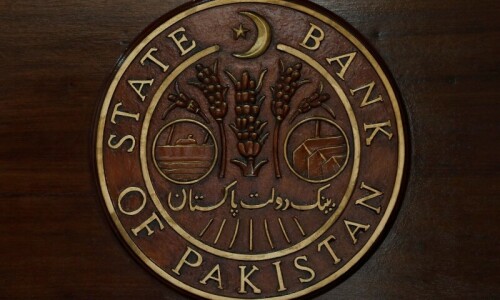India and Pakistan may stumble into a large-scale war neither side wants, warns a US intelligence report while exploring the possibilities of miscalculations leading to a war in South Asia.
The assessment is included in a Global Trends report produced every four years by the US government's National Intelligence Council, released in Washington. The report, released on Wednesday, focuses on both immediate and distant futures and is designed to help policymakers anticipate the forces likely to shape the world in the next five to 20 years.
“India and Pakistan may stumble into a large-scale war neither side wants, especially following a terrorist attack that the Indian government judges to be significant,” the report warns.
Read: There is hope for Pakistan-India peace process
The ability of some militant outfits to conduct attacks, New Delhi’s resolve to retaliate against Islamabad after such an attack, and Islamabad’s determination to defend itself “are likely to persist and may increase” in the next five years, the report adds.
“Miscalculation by both governments could prompt a breakdown in the deterrence that has restricted conflict to levels each side judges it can manage.”
The report warns policymakers in Washington that “a full-scale war could inflict damage that would have economic and political consequences for years.”
The US policy in Afghanistan and its impact on the neighbouring countries is top on a list of key uncertainties in South Asia that are underlined in the report.
“US actions in Afghanistan during the next year will have significant consequences across the region, particularly in Pakistan and India,” the report states.
This would be “especially true” if a security vacuum emerges in Afghanistan that results in a civil war between the Taliban and its Afghan opponents, expanded freedom of manoeuvre for regional terrorist networks, or criminals and refugees flowing out of the country, it adds.
The report predicts that such an outcome would exacerbate political tensions and conflict in western Pakistan and sharpen the India-Pakistan rivalry by strengthening longstanding judgments about covert warfare in Islamabad and New Delhi.
“An abrupt US exit probably would also amplify concerns that the United States will lose interest in South Asia generally,” the document says.
Also read: A hasty withdrawal from Afghanistan would be unwise, writes PM in op-ed
The US intelligence community estimates that India and China may also slip into a conflict that neither government intends, “especially if military forces escalate a conflict quickly to challenge each other on a critical part of the contested border”.
In June 2020, a short military exchange resulted in the deaths of at least 20 Indian soldiers, exacerbated the strategic rivalry between Beijing and New Delhi and sharply affected international perceptions of both countries.
The report puts the prospects for increased regional trade or energy cooperation in South Asia during the next five years as low, “due in part to the high probability of ongoing hostility between India and Pakistan". Trade within South Asia is already the lowest of any region in the world.
The US intelligence community warns that water insecurity in the region is also an increasing risk. The assessment includes forecasts by the United Nations Development Programme (UNDP) that Pakistan could face absolute water scarcity by 2025, given a combination of poor water conservation practices, rising temperatures, and decreased rainfall.
The report notes that previous extreme weather events, such as the 1970 cyclone in the Bay of Bengal, contributed to state failure in then-East Pakistan and the creation of Bangladesh the next year. It warns that future events could also prompt a regional crisis with enormous humanitarian, political, and security implications to which external powers probably would try to respond.
The report points out that security threats have “undergirded popular support” for nationalist leaders, and these threats are likely to continue or worsen in some cases. For example, “military tensions between India and Pakistan are at their most contentious in many years, strengthening leaders in both capitals.”
The US intelligence community notes that information technology is fuelling authoritarian tendencies by making it easier for South Asian governments to influence their populations. It points out that in 2019, India “led the world in Internet shutdowns by a wide margin” — with several months-long crackdowns to suppress protests, including in occupied Kashmir. Pakistan has deployed Huawei’s Safe Cities technology, raising public fears of increased surveillance.
The report notes that the balancing approach, particularly in relation to China, also affects regional dynamics. Bangladesh, Maldives, Nepal, Pakistan and Sri Lanka probably judge their countries “can more easily deflect New Delhi’s demands or block its regional leadership aspirations by maintaining ties with Beijing”.
For its part, New Delhi probably will look for ways to mitigate Chinese influence given China’s expanding foothold in the Indian Ocean, the report adds. For example, India almost certainly will continue to encourage Japan to offer economic investment and some military cooperation to other South Asian countries to push them to align more closely with New Delhi and Tokyo.
The report predicts that despite their growing interest in China, almost every government in the region will seek to maintain ties with the US as part of their balancing efforts. The United States is the biggest export market for Pakistan, Sri Lanka and Bangladesh, and most South Asian leaders continue to cultivate and publicly tout their relationships with Washington.
US intelligence analysts predict that during the next five years, slowing economic growth and growing polarisation will pose an increasing risk to traditions of democratic and independent governance in several countries in South Asia.
Many countries will strengthen their efforts to hedge and balance their relationships with multiple external powers, including China, Russia, Japan, and the US.
Through 2025, South Asia will have to manage the challenges that internal security problems, the risk of inter-state war, and the effects of climate change and pollution pose to at least some countries’ longer-term democratic and economic development.
The report projects that economic growth in South Asia will remain slow during the next five years and will be insufficient to employ the region’s expanding workforce — especially as the world emerges from the pandemic.
Before the Covid-19 outbreak, unemployment in India had reached a 40-year high until GDP growth slowed markedly in the latter half of 2019, and India’s strict lockdown from March to May 2020 temporarily drove unemployment up to 23 per cent.
The report argues that the region’s economy is hampered by outdated legal systems, severe pollution, water shortages, and highly bureaucratic regulatory environments — all increasing investor uncertainty. “No government in the region is prepared to undertake economic reforms on the scale required to generate robust growth,” the report adds.
It notes that almost all the economies in the region remain focused on agriculture, with the bulk of their workforces dependent on farming. Most countries’ agricultural sectors are underproductive in relation to the large share of government funds and natural resources they consume.
According to the report, this disparity is driven by a variety of factors, including growing water scarcity, environmental damage and climate change effects, and government failure to reform agricultural subsidies that benefit rural constituents at the expense of growing urban populations.
Democracy
US intelligence analysts argue that despite some signs of sustained democratisation, domestic politics in much of the region are likely to continue on the polarising course of the past few years, and this trend may sharpen in some countries.
“Strongperson leaders, even those elected in largely free and fair contests, probably will push majoritarian agendas that widen factional divides — potentially weakening political stability in societies already split along sectarian and ethnic lines,” they warn.
“This political polarisation is rooted in strongly felt nationalist narratives that have become prominent in recent years and met little effective resistance from opposition parties or the courts.”
The report warns that polarising political rule of some leaders in the region will probably increase the inequities or abuses faced by minorities and political opponents of the ruling parties.
“In India and Sri Lanka, Muslims are likely to continue to experience growing political and economic discrimination from Hindu and Sinhalese Buddhist nationalist ruling parties.”
The report notes that Afghanistan too is seeing an intensification of ethnic tensions between Pashtuns and other ethnic groups, a trend that is accelerating as Afghans prepare for the withdrawal of Western troops.
The combination of eroding institutions, mounting security threats, and new digital technologies is likely to enable some South Asian leaders to continue advancing their authoritarian policies, but probably in the face of an uncertain political cost associated with an economic slowdown, the report warns.
It notes that some of these leaders have applied majoritarian political formulae, whereas others have undermined independent judiciaries, election commissions, and politically neutral militaries and bureaucracies, weakening potential future resistance.














































